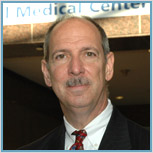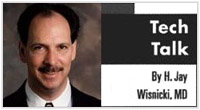 |
||||
|
||||
|
Integrating data is key to enhancing information systems
By Lothar Koob Published in Ophthalmology Times, Vol. 25, No. 1 How will information technology improve outcome measurements, practice efficiency, patient satisfaction, and general productivity in the future? I believe we will see an intensification of the healthcare industry's emphasis on informatics, data networking, and cost-effective healthcare delivery. The reorganization of healthcare delivery worldwide has had an enormous impact on the role of medical devices and diagnostic services in health care, and on technological advancements in areas such as data digitization, international data standards, and data analysis. The complexity of healthcare delivery and the trend toward patientcentered services call for information technology solutions that make the connection among information, management, and patient care a priority. Health professionals are counting on information technology to help them become more efficient. Healthcare organizations have been struggling to integrate disparate information generated in clinical environments. There is also considerable interest in using the Internet to provide consumer-driven information. However, before we reach that point, we have to overcome significant deficiencies in the way information is handled in most offices. Over the past decade, medical diagnostic instruments have evolved to generate information in greater quantities and of greater value, thus allowing earlier and more accurate diagnoses. Researchers continue to develop more technologies and more methods, which can provide better correlation of historic exam data and also combine results from different testing modalities. Many opportunities have not been realized simply because the steps to make them possible have not been taken. Exam data results come from isolated systems. Some of these medical devices can only exchange very limited information. Imaging and measuring devices are misused as postprocessing, archiving, and retrieval systems. The information output is limited to paper printouts or very low-tech communication to another device. Since the original raw data usually are not preserved, any transmitted information usually is stagnantit cannot be further organized and/or reanalyzed. Valuable information that is buried in the original raw data is discarded. All diagnostic and therapeutic devices need to be connected to one workstation so that the original raw data from all the instruments are available. This workstation could be one terminal or several distributed over offices, departments, or even hospitals. Each workstation would be capable of retrieving, combining, and reanalyzing test results from a wide array of instruments. Ideally, this workstation should incorporate the user interface and postprocessing capabilities of every instrument connected to the network. For example, an end user might take a fundus image and the results of a visual field test and display them on a computer screen in one comprehensive view. The user could do a complete analysis of the fundus image and of the perimetry results. The user also would be able to obtain a compound analysis, in which the fundus image and the visual field data are correlated, combined, and analyzed as a whole. For example, simple presentation of an optic nerve photo on the same video screen as threshold visual field test results might help doctors see that a subtle or borderline field defect exactly coincides with an equally subtle area of thinning of the neuroretinal rim. Taken singly, each finding might simply have made the doctor suspicious; taken together, the two might provide compelling confirmation of early glaucoma. After evaluation and diagnosis are completed, a very simple archiving process can be initiated, which transfers the information either via the Internet into a virtual data warehouse, or in a simpler version just to a data storage device attached to the ophthalmologic workstation. This would ensure ease of use in archiving and retrieval and, of course, proper technology and handling for data security and storage capacity. Historic information from all instruments stored in raw form would allow users to reprocess earlier data using new methods as they are developed. Once the information is archived, authorized users could access it from anywhere in the world. This information technology "central nervous system" that sits in the middle of a complete office automation system obviously has to tie seamlessly into a plethora of frontend systemssuch as patient admission and scheduling systems, clinical electronic medical record systems and into backend systems such as billing and outcomes analysis systems. Once all the information is in one location, computer systems can further improve the process of case analysis through expert system software concepts, providing integration of information from multiple modalities combined with statistical data. Why not now? In discussing this concept with potential users, the question is always raised of why this seamless integration and system interoperability are only found in fragments or not at all. I think bringing it to reality requires a change in the mindset of industry and customers to value such capabilities. The technology is available — it is just a matter of establishing universal standards in data exchange among manufacturers and instruments. Now, we have established user interfaces that ensure ease of use. Hardware and software are much more reliable and standardized, cost of memory is almost negligible, and cost and speed in processing and communication are no longer an issue. End users are much more openminded toward information technologies and more aware about data integrity and security. Information technology can certainly help meet the pressure of increased practice efficiency and productivity in cost reduction. The Internet and the different communication technologies demonstrate clearly that communication is one of the important elements of how we do business today. There are many details to be worked out. A lot of momentum is building in various work groups to define standards and to make use of existing ones. I strongly believe that the whole industry will benefit if we all commit to open architecture standards and open information and data exchange. We should not build a wall around our products to protect our shortterm business volume while sacrificing the significant benefits outlined above. In the long run, both the healthcare provider and industry will see a significant benefit. Zeiss Humphrey is committed to pursuing this avenue for the benefit of our customers and their patients. We are committed to working with the industry to come up with standards to make this concept a reality. Providing reliable and functional data integration should be everyone's objective. With the dawning of the new year, everyone should commit to doing business in a new way, even in this very competitive industry environment. |
Copyright ©2006 H.J. Wisnicki, MD All Rights Reserved
